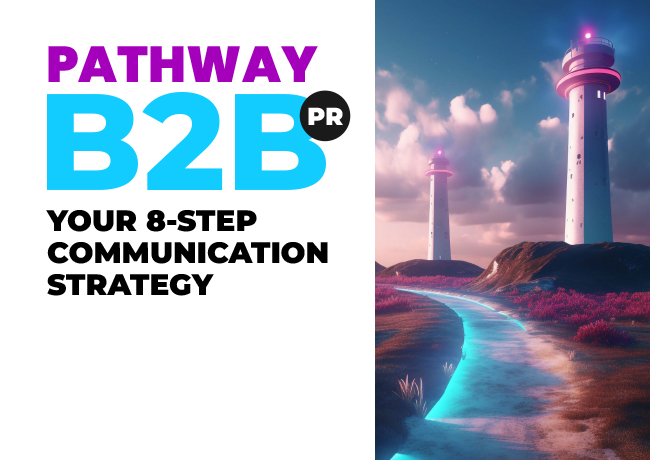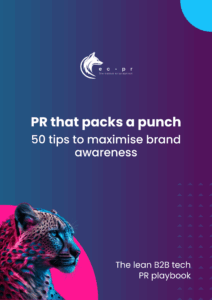
What is branding and why is it a key component of your PR strategy?
Branding plays a fundamental role in how your customers, and potential customers, perceive your company.
Branding and PR
This perception, and image, of your brand is shaped by how you look, how you act and what you say. Which is exactly why PR and branding are closely connected; both are ultimately about image management.
This week, we’re taking an in-depth look at what branding means to different people within the marketing industry and we’ve asked three industry experts to give us their take on what branding is and how they define it.
First to comment is Sally Fisher, an independent marketing consultant, who runs Marketing, Done In A Day. Sally says that she’s often explaining the difference between marketing and branding.
You can read Sally’s blog on this matter here, but here’s her perspective…
One thing I’ve noticed recently is that there’s often much confusion around what ‘Marketing’ is versus what ‘Branding’ is…
Marketing and Branding are two different concepts; they’re intrinsically and unequivocally linked and each can, and does, impact the other, but they’re two different things.
Brand image
Branding is about creating a full and holistic personality for your business – your vision, your mission, your values and your value proposition. These are the foundational aspects of your business which help create and project your personality, how you look, what you say, the way you do things, the service and experience you provide.
Your brand identity such as your colours, your logo and your tone of voice etc should represent your brand personality, and together they should all present a joined up, consistent and positive brand experience.
Marketing activity
Marketing is the act of growing your business and making you money – actively targeting the right customers in the right place, using the right channels to position your business on their consideration list and ideally, persuade them to buy from you. Your marketing efforts utilise your brand components to present a consistent, joined-up message.
Coca-Cola Brand
If we consider the ubiquitous brand Coca-Cola – the first thoughts that come to mind are: Red, white, global, refreshment, diet drink, consistent, reliable – these are the brand aspects of Coca-Cola and represent how they’ve chosen to position themselves in our minds.
But their marketing efforts are how they target us as customers, how they sell their drinks to us, their chosen advertising channels, the messages they communicate and their distribution choices – making Coca-Cola available to us all, globally!
In a nutshell, your brand is how you are perceived in the minds of your customers – your brand is what you ‘ARE‘!
Your marketing is the planning and action you take to acquire and retain your customer – marketing is what you ‘DO’
– Sally Fisher – Marketing, Done in a Day.
Julie Frances, a Creative Director at Creative Fire says that questions around branding can often be tricky to answer.
She explains the origins of the term and what her take on branding is here:
The term “brand” came from cattle ranchers over 50 years ago and in the late 80’s, companies like Coca-Cola started to brand their packaged goods in a way that differentiated them from the bland competition.
As time went on and marketeers got savvy, they realised that there was more to ‘a brand’ than just a company name and a pretty box!
Branding has evolved and with time, it has become more subjective. Branding has become more about a person’s feelings (or perception) for a product, service or business.
Let’s explain what branding is not.
Branding is not limited to a logo or a colour scheme. It is not simply to make people aware of your business or service. These are critical elements of the brand building process, but these only scratch the surface.
It’s also important to acknowledge the difference between branding and marketing.
Marketing is the activity designed to promote your business; it will complement branding, but it doesn’t replace it.
Here is our take on what branding is.
1 Brands mean different things to different people.
It can play a different role depending on who it interacts with and when. Some people will connect meaningfully with an aspect of a brand while others won’t. Quite often a person’s relationship with a brand can develop, increasing trust, loyalty and engagement. Smart and successful brands work hard to reach different audiences who matter to their business to cement the relationship with the brand.
2 Brands grow, develop, respond and shift with the times.
It helps to think of branding as an ever-evolving experience rather than a structured set of rules. A brand can be the sum of interactions with infinite possibilities and every touch point makes a difference.
3 Brands are about feelings.
When you ask people why they love certain brands, they might provide a list of logical reasons but in the end, it often comes down to a feeling. How does that brand really make them feel? Successful brands hold great emotional meaning for people and that’s what can make a brand loved and respected.
4 Discussing the impact of a brand is easier than defining what a brand is.
When we talk about defining a brand, we often talk about what makes a brand impactful for a business. It might be better ROI or an aligned leadership. Impact from a brand refresh or a new positioning, a great campaign or just more brand engagement is where you really see a brand doing its job well. For example, the impact of an engaged workplace can create increased innovation, productivity, creativity and loyalty amongst employees and new recruits.
Ultimately, your brand is what the marketplace says it is.
– Brian Woyt, Founder of the branding agency Wolf & Missile.
Establishing an understanding about how you and your business define your brand and what it means can help guide your brand and business forward. But remember, it doesn’t matter if you think your brand has the potential to be the next Apple or Nike — what really matters is what your target audience thinks of your brand.
10 steps to help build a brand:
- Establish the purpose
- Identify the target audience
- Create a unique voice for your brand
- Tell your brand’s story
- Design the brand’s visual elements
- Establish a differentiation
- Build out your brand
- Promote, promote, promote
- Get advocates for your brand
- Evolve as you grow
-Julie Frances, Creative Director at Creative Fire
And finally, Amir Bazrafshan, Founder of Apricot Box says that If you want your business to stand out, be remembered and be valuable, then branding is a term you need to understand intimately.
If you don’t understand what branding is, you won’t be able to use it to your advantage. That’s what this blog post aims to clarify so that you know what branding is, what it entails and why it’s essential to the long-term growth of your business.
What branding isn’t
Branding is often used interchangeably with things such as a logo, identity, a product or a promise.
But branding is none of these.
For example, a logo is a very useful business tool that helps to add distinctiveness and recognition, but it’s not branding – it’s a symbol of the brand.
So this begs the obvious question…
…what is it?
Simply put, branding is the process of giving meaning to your business and its offering.
The power of branding means that you can take something, even if it’s a commodity and use branding to:
- Differentiate from similar products/services
- Be easily recognisable
- Be recalled at points of purchase more readily (i.e. be top of mind)
- Command premium prices (helping to increase your profits)
- Earn loyalty
Those that understand branding will understand that it’s one of the best and most important investments that a company can make.
The tools of branding
Branding is a long term and ongoing process and there are many tools and techniques that a business must draw upon to get it right.
Your brand will live in the minds of your audience so what and how you communicate plus the quality of service/products and follow up all matter – they all work together to build a brand.
How do you ensure that all these separate parts are pulling in the same direction and stay coherent over the long term?
By developing a solid brand strategy.
This document is your road map. It will guide operational and creative decisions. It helps to unite a business and all stakeholders.
Trying to brand your business without a brand strategy would be like trying to drive to a specific destination without a map. In the fog. Whilst blindfolded. Don’t do it!
Elements of your strategy should include details on objectives, market segments, mission, values and a strategic position. All of this will help you to be deliberate in your choices around your brand identity.
Your brand identity is a collection of elements that you use to articulate your strategy to your target audience – so things such as:
- Logo
- Other distinctive visual assets
- Colours
- Tone of voice
- Messaging
- Font selection
- Photo style
- Etc.
These must all work together as a system, with a common through line – the through line being what you want people to know and understand about your brand – what you want to mean to them.
The thing is, people are so busy and are exposed to so many different stimuli on a moment by moment basis and so, you have to be very selective about what you want people to know about your brand.
Your strategy will help you to define this and be purposeful about it.
Once you have your brand strategy and identity defined, it’s time to execute.
The branding mindset
A brand isn’t grown overnight – branding is an ongoing and long-term process and commitment.
If you don’t embrace the long-term nature of branding, then you’ll be frustrated and not get the results that are possible.
Building brand reputation
The way that branding works is that you make impressions on your audience, day by day, message by message, experience by experience – all of which compound into a specific meaning that the audience has of your business and offering.
And all of this takes time!
If your strategy and execution is on point, then what your audience understands of you will be very close to what you want them to understand.
Meaning, those benefits – recognition, distinctiveness, premium prices, long term growth and stability, will be yours to enjoy.
Your brand is the single most important investment you can make in your business
– Steve Forbes, Editor in chief, Forbes Magazine.
-Amir Bazrafshan, Founder of Apricot Box
Why is having a strong brand important for B2B PR?
Branding and PR may sit separately within your organisation, but they must work together seamlessly to build customer trust and create a positive brand perception. This can only be delivered through a cohesive, optimised, and effective communication strategy.

DOWNLOAD: Your 8-Step Communication Strategy
A complete guide to delivering your business plan
As Ted Reubin said so articulately: “Your brand is what your business does, what you stand for, and how you approach your work. You have significant control over your brand because you are able to decide what you want to do and how you want to do it. You can’t completely control how others see your brand, but you can do everything within your power to leave them with a positive impression.
“Your reputation is what people remember and share about you. Living up to the standards of your brand doesn’t guarantee a good reputation, but it’s an excellent place to start. Brands that are reliable, accountable, and customer-friendly will often have a positive reputation, but it’s no guarantee.”
Brand reputation and PR strategy
Reputation stems from how you make people feel about your brand and how your stakeholders pass on that experience to others. You have to work hard at shaping that reputation through a proactive and authentic marketing communication programmes i.e. public relations. Thus branding is a key component of your PR strategy, because without clear branding you cannot develop effective, tailored messaging and PR campaigns.
Subscribe to our updates
Stay up to date with the latest insights, case studies and PR guides.

Your 8-Step Communication Strategy Guide
A comprehensive guide to delivering your business goals using intelligent and relevant messaging.



